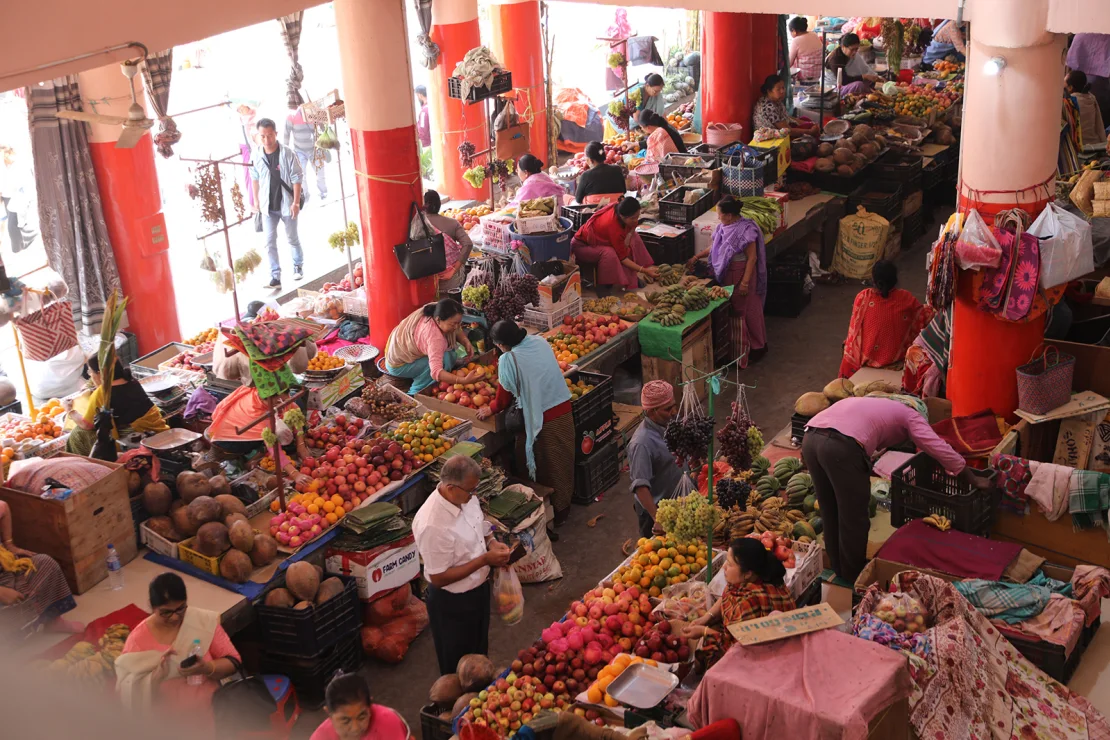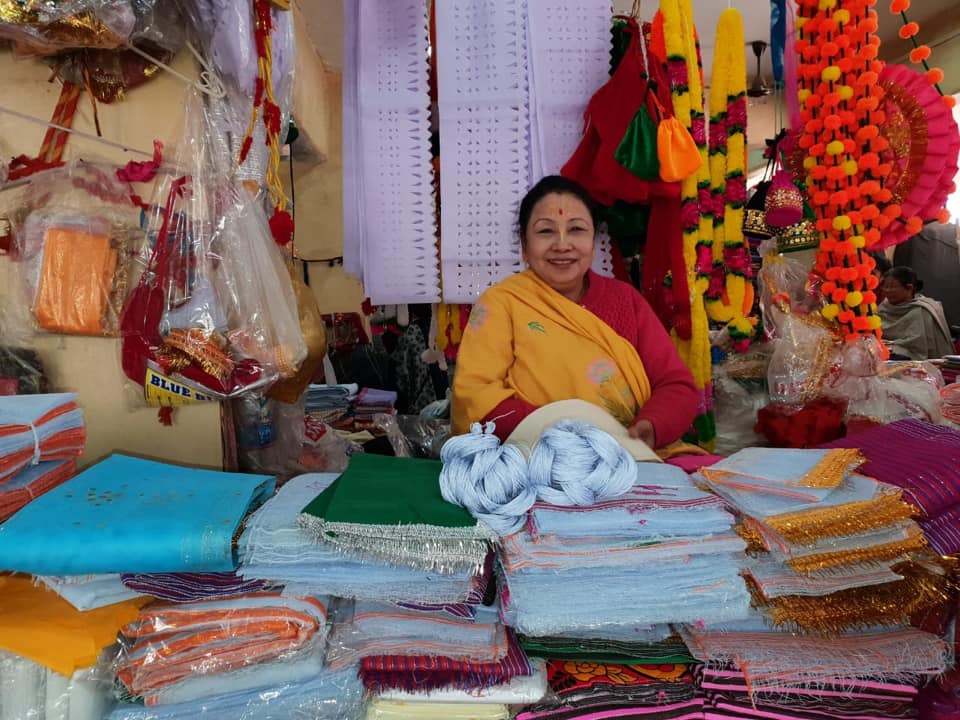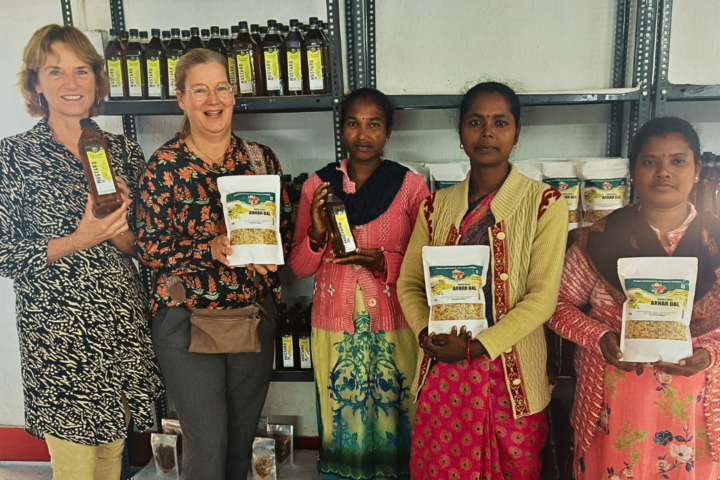Located in the capital city of Imphal in the Indian state of Manipur, Ima Keithel is a more than 500-year-old daily market that is run and managed entirely by 5,000 women vendors, making it the largest all-women run market in the world.
Literally translated as ‘Mother’s Market’ in the local Meitei language (one of India’s 22 official languages), women started the market in the 16th century with a handful of stalls. Today, the complex of three multi-story buildings is the heart of all commercial and socio-economic activities in Imphal that not only satisfies the needs of the women who sell or buy, it also boosts the local economy.
One can find delicacies from traditional Manipuri sweets to fresh starfruit, bamboo shoots, lotus flower beans and fresh or fermented fish or delicious warm meals made on the spot. One can shop for fabrics, rugs, terra cotta pottery sold from a family that’s been doing it for three generations, incense, festival supplies and authentic handicrafts.
The only way a woman can become a vendor is if she gets nominated by an existing member. There are families that have been working there for generations. According to CNN, men may come to the market but only to buy goods, to do the heavy lifting, guarding or deliver women cups of chai.
Birth of the all-women’s market
In the 16th century, a labor system in Manipur forced all male members of the Meitie community (which represents about 50% of Manipur’s population) to work in other countries or fight wars, leaving the women behind in the villages. To support their household, the women took the responsibility in their own hands – cultivated their paddy fields, weaved textiles and created products that they sold in improvised markets. This led to the birth of Ima Keithel. Over the years, it grew exponentially into a bustling market of thousands of female traders selling everything from household items to handicrafts and textiles.

Political reforms jeopardized market
Ima Keithel was a major source of sustenance for the households in the villages. Besides, it was one of the primary markets that helped stimulate the local economy. In the 19th century, the market suffered from the stringent economic and political reforms enforced by British rulers. This adversely affected the market and socio-economic fabric of the state at large. Eventually, these stringent reforms led to a revolt by these women vendors against the unjust economic policies. Mass meetings, protests and rallies were organized to press for change.
Ima Keithel symbolizes women empowerment
The British did not like this revolt and in an attempt to crush the agitation, they tried disposing of the market’s buildings to foreigners and external buyers. But the women traders thwarted these attempts successfully. This social movement died down during World War II when Manipur was transformed into a war-zone. But the pro-active role played by women left an indelible mark on society. It became a unique symbol of gender equality and women empowerment.
Market becomes socio-economic engine
Post India’s independence, the market revived completely and subsequently reignited the socio-economic engine of the state. The women traders in the market stay up-to-date with one another on current affairs and the latest happenings in the state. The market is managed by a union of women. Only women who have been married at least once are allowed to trade and run the stands here, and this tradition is passed on from one generation to another. One of the services of the union is a credit system; women traders can borrow money from union for the purchase of goods. This system helps in the smooth functioning of the market.
In February 2023, delegates of B20 from the G20 forum visited the market. Ima Keithel has a spirit and liveliness that makes it a culturally and historically significant market in India while contributing to women empowerment, entrepreneurship and the state’s grassroots economy..
About Women on Wings
Women on Wings provides tailor-made business consultancy and mentoring to Indian social enterprises and government institutions with ambition to scale and offer further job opportunities to women living in rural India. A professional network of Indian and Dutch experts deliver on-the-ground, pro bono support in fields like business strategy, sales, finance, HR, supply chain and marketing so organizations become more stable, achieve real growth, and create more jobs for women. Women on Wings’ goal is to co-create one million jobs for women to transform countless lives and unleash the full potential of all women in rural India.




